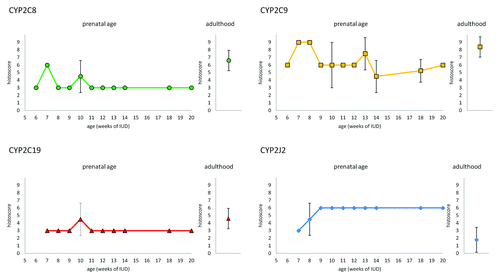Figures & data
Table 1. Brief summary of intestine, liver and kidney IUD events
Figure 1. Expression of CYP2C8, CYP29, CYP2C19, and CYP2J2 in enterocytes of embryonic/fetal intestine during 7th-20th week of IUD (n = 29) and adult duodenal tissue samples (n = 5). Graphs show the average histoscore. The error bars represent standard deviation.

Figure 2. Differences between signal localization in fetal intestine in 16th week of IUD. CYP2C8 (A) and CYP2C9 (B) in enterocytes show stronger positivity in crypts than in apex of villi. On the other hand, CYP2C19 (C) and CYP2J2 (D) show stronger positivity in apex of villi, area of crypts is almost negative.
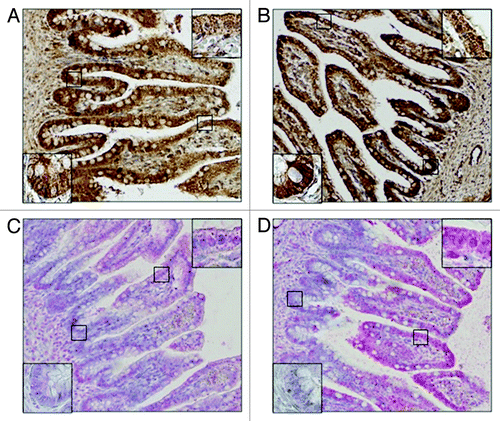
Figure 3. Expression of CYP2C8, CYP29, CYP2C19, and CYP2J2 in hepatocytes of embryonic/fetal liver during 5th-20th week of IUD (n = 23) and adult tissue samples (n = 5). Graphs show the average histoscore. The error bars represent standard deviation.
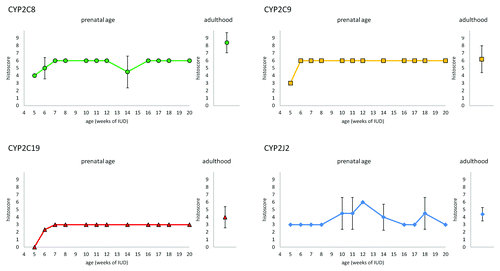
Figure 4. Embryonic kidney in 7th week of IUD. The proximal tubuli shows stronger staining than other type of tubuli. The metanephrogenic blastema shows weak positivity whereas uninduced mesenchyme is negative.
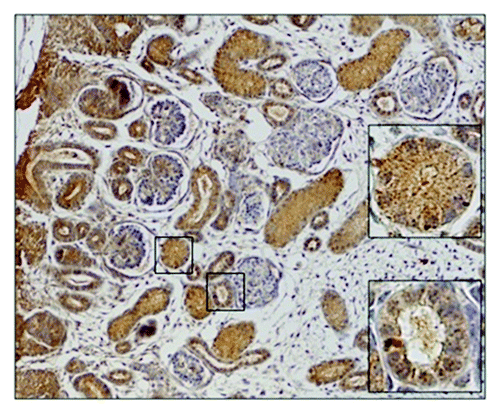
Figure 5. Expression of CYP2C8, CYP29, CYP2C19, and CYP2J2 in the proximal tubuli of embryonic/fetal kidney during 6th-20th week of IUD (n = 25) and adult tissue samples (n = 5). Graphs show the average histoscore. The error bars represent standard deviation.
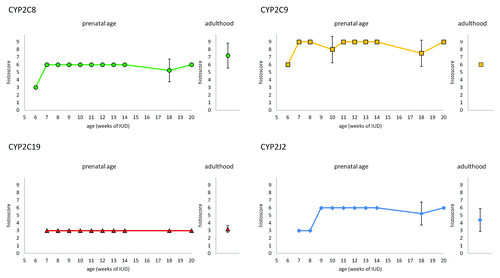
Figure 6. Expression of CYP2C8, CYP29, CYP2C19, and CYP2J2 in other tubuli (loops of Henle, distal tubuli, and collecting ducts) of embryonic/fetal kidney during 6th-20thweek of IUD (n = 25) and adult tissue samples (n = 5). Graphs show the average histoscore. The error bars represent standard deviation.
